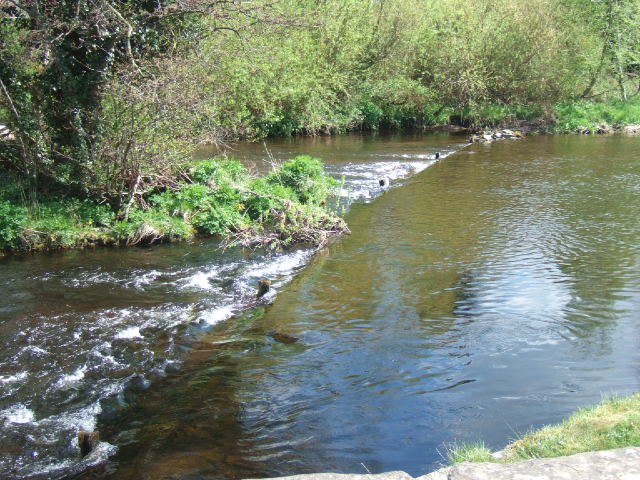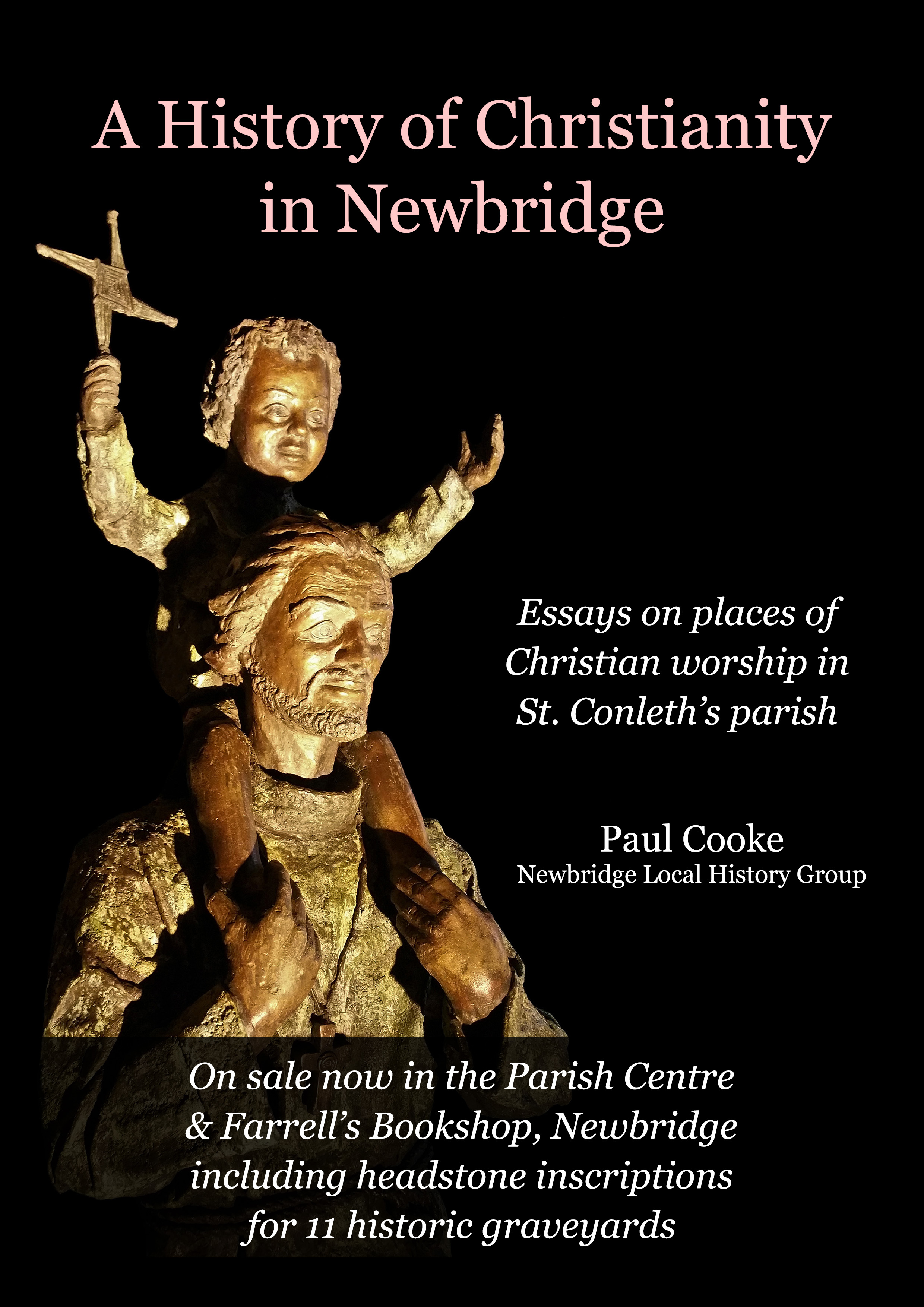Frank Boland: Play-time in the 1950s
PLAY- TIME in the EARLY 50’s
 “I’m just going out to play” was my usual comment on my way out of our house. The word play in those days could mean a multitude of activities. Many of them were seasonal, such as anything to do with the river or conkers (chestnuts); whilst games such as footfall, hurling, rounders (our version of baseball), hoops and cowboys were played all year round. A feature of our cowboy games was that there were no Indians – no one wanted to be on the losing side! Other games like marbles, throwing cigarette boxes, car spotting and many other games had their phases. Hard to credit now that you would have to wait at the Barrack Gate, Main St., which was then on the main Cork/ Limerick road, for a car to appear.
“I’m just going out to play” was my usual comment on my way out of our house. The word play in those days could mean a multitude of activities. Many of them were seasonal, such as anything to do with the river or conkers (chestnuts); whilst games such as footfall, hurling, rounders (our version of baseball), hoops and cowboys were played all year round. A feature of our cowboy games was that there were no Indians – no one wanted to be on the losing side! Other games like marbles, throwing cigarette boxes, car spotting and many other games had their phases. Hard to credit now that you would have to wait at the Barrack Gate, Main St., which was then on the main Cork/ Limerick road, for a car to appear.
The outdoor games most frequently played were football, hurling and rounders. In this day and age, it is difficult to comprehend that the availability of a ball could be a problem. It was top of our requirement list when one of those games was suggested. As football was the most popular past-time, a football owner had to be part of the game. We would use a rubber ball, somewhere, between the size of a tennis ball and a “real” football. The owner carried a lot of power and had to be kept sweet. I can remember many a game ending when the ball owner became unhappy or had to go home. Rounders was more of a possibility than hurling as only one hurl was required. Once again we used a rubber ball. The other available ball at the time was solid sponge which was far too lively and very difficult to control, making it a danger to windows. The main playing area in the Barracks (where I lived) was the open space -- you could not call it a green -- behind all the Liffey View houses. It was large enough to accommodate football matches and games of rounders. Football was for the boys and rounders could be mixed. Another playing area was at a lamp post (still there) at the top of the hill against the wall of St Conleth’s Park (the County ground) and it was lit at night which was a bonus. Football at this spot had to be on the ground (soccer) because of space restrictions. A match with two goals was not possible so a game of “three goals in”, using only one goalmouth, was what we played. Occasionally we played on a green area in the County grounds which is now the town car park.
Messing about on the river, as the song says, was the main activity in the summer months. The Watering Gates; the Strand; the Island and the pipe (at the Watering Gates) were scenes of great adventures. It was possible to cross over the river at certain points in bare feet without getting our short trousers wet. The ideal way to cross the river over to Chapel Lane (my grandparents) or to Abbin’s field (Liffey Drive) was to walk on the pipe from the Watering Gates (old gasworks pipe is still there). Now, it tended to be slippery and the water was deeper on one side than the other (too deep for the short trousers), so great care was required to avoid a wetting. I remember it being easier to keep my balance going across rather than coming back.  The Island was a huge attraction and it was possible to cross over from the park. Back then it felt as if you were in the jungle with Tarzan. You could cut down branches for building camps either on the Island or back across the river and it was a good place for bird’s nests. Sticks were also cut for making bows and arrows. We would wrap a fine wire around the tip of the arrow to help keep its balance in flight. When you were on the Island you had to be alert to the possibility of the flood coming down that would prevent you getting back across the river. Occasionally, it was necessary for the “big lads” to come down from the Strand to carry small boys from the Island to Chapel lane. It was certainly possible to lose your sense of time on the Island. Fishing with jam jars for minnow on the river and then putting them into the bath at home was a regular pastime. I can verify that the minnow did not eat bread crumbs or survive in the bath – they were usually belly-up the next morning. Whilst at the river, great care was necessary to avoid broken jam jars in the water and on the bank. After a few mishaps, I used to wear my old sandals or old altar serving slippers for protection. Of course, swimming and paddling were major activities, weather and flood permitting. The Strand was the venue with the “Men’s” at the far end for the boys. The “Ladies” was at the town side and actually had a small sandy strip. Access to the Strand was down a steep slippery path (near the Ryston entrance). The current river walk to the Strand was not there then. In fact, the steep bank there was a favourite spot for eel fishing and I can remember the bigger lads having great difficulty getting the eels out of the river and then killing them.
The Island was a huge attraction and it was possible to cross over from the park. Back then it felt as if you were in the jungle with Tarzan. You could cut down branches for building camps either on the Island or back across the river and it was a good place for bird’s nests. Sticks were also cut for making bows and arrows. We would wrap a fine wire around the tip of the arrow to help keep its balance in flight. When you were on the Island you had to be alert to the possibility of the flood coming down that would prevent you getting back across the river. Occasionally, it was necessary for the “big lads” to come down from the Strand to carry small boys from the Island to Chapel lane. It was certainly possible to lose your sense of time on the Island. Fishing with jam jars for minnow on the river and then putting them into the bath at home was a regular pastime. I can verify that the minnow did not eat bread crumbs or survive in the bath – they were usually belly-up the next morning. Whilst at the river, great care was necessary to avoid broken jam jars in the water and on the bank. After a few mishaps, I used to wear my old sandals or old altar serving slippers for protection. Of course, swimming and paddling were major activities, weather and flood permitting. The Strand was the venue with the “Men’s” at the far end for the boys. The “Ladies” was at the town side and actually had a small sandy strip. Access to the Strand was down a steep slippery path (near the Ryston entrance). The current river walk to the Strand was not there then. In fact, the steep bank there was a favourite spot for eel fishing and I can remember the bigger lads having great difficulty getting the eels out of the river and then killing them.
Many of our games had an athletics element and often involved running. Chasing one another was a regular exercise and we would split into teams. We made our own high jumps with sticks and clothes pegs which could be moved up and down. Long jumps, running races and leap frogs were also easy to organise. There may have been a shortage of bicycles but there were plenty of wheels / hoops with the spokes removed. We would bring a hoop for a run by beating it with a stick. Some hoops had a tyre and whilst these ones ran more easily they were also faster and more difficult to keep under control. A regular hoop run was to the Pinkeen Bridge (The Gables) and I went to Donnelly’s Hollow once. Ball catching and throwing games were popular and the girls were particularly adept at juggling more than one ball in the air or against a wall. They would say rhymes at the same time. The girls played hop scotch with empty shoe polish tins. The hop scotch area was marked out with chalk. Skipping was also popular with the girls. Some had individual skipping ropes or a long rope was swung by two persons and everybody could then join in the skipping in their turn. If there was a mixed crowd, we played Statues, Simon Says, Chuckie Chuckie Four Corners and Queenie, Queenie, Who Has the Ball?
Playing marbles and cigarette box throwing/skimming had their own periods of popularity during the year. The marbles were multi-coloured glass and you placed one in the crook of your finger and propelled it with your thumb. The usual cry was “knuckle down, bult full". The objective was to play the marbles into three holes set in a triangle and you could knock your opponents out of the way. Empty cigarette boxes were flattened and skimmed against a wall and the nearest to the wall won. You could also win the cards that you landed on. Conkers came into their own during the chestnut season. There were chestnut trees down at Buckley’s Cross and further away at St. Patrick’s Well. Apart from the usual game of conkers, you could make bandoliers with any surplus chestnuts and wear them like Pancho Villa when playing cowboys.
When indoors we would spend most of our time reading (Junior Library and comic swapping provided the reading material), making jigsaws and playing card games.
This trip down memory lane reminds me of the huge variety of activities enjoyed in my youth and confirms for me that boredom was never an issue then. .
Only meal-times and rain stopped play.

